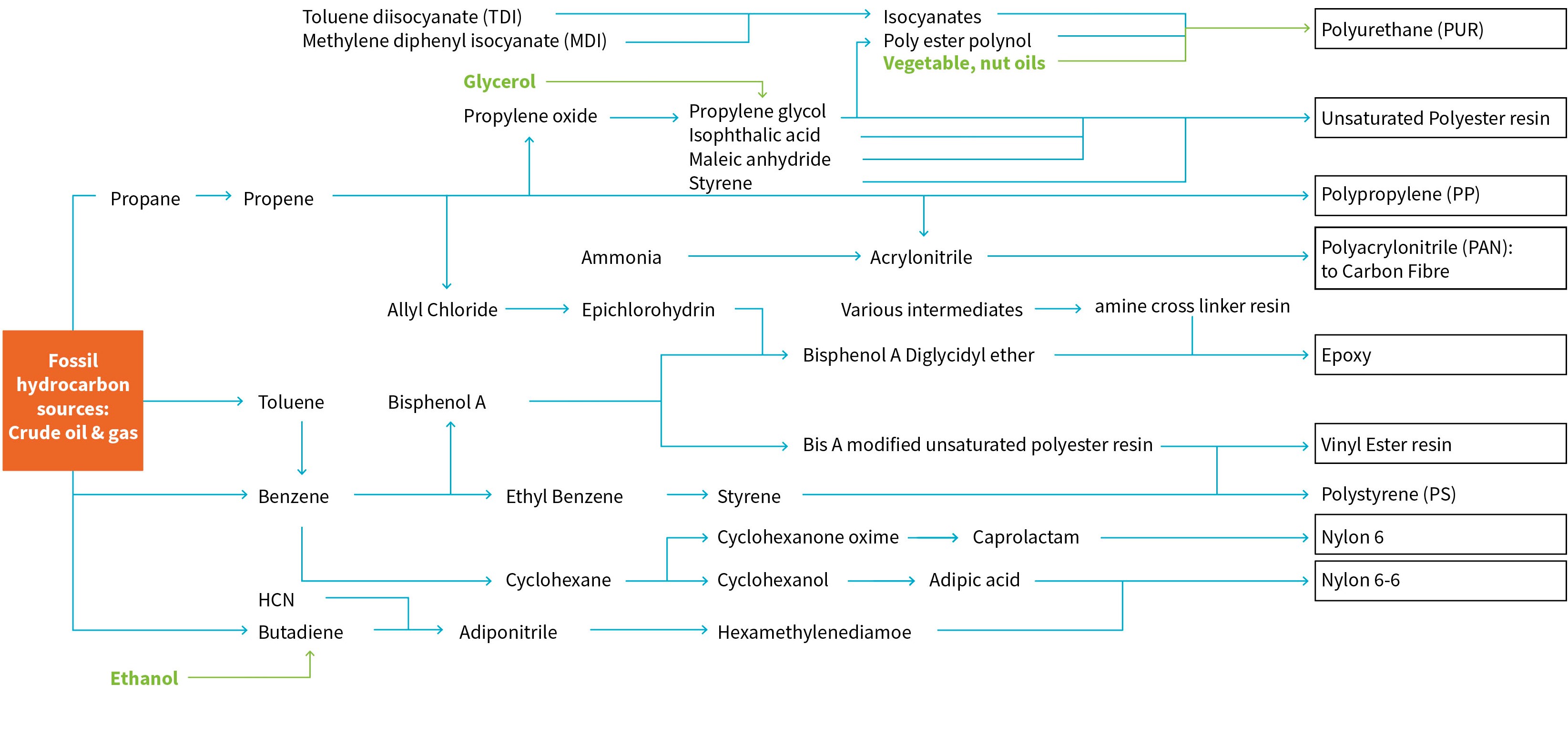Composite materials need the high performance, durability and environmental resistance of FRPs in order to contribute to delivering net zero. However, they are exceptionally challenging to manage at end of life. A fundamental change is therefore required in the sustainability of these materials and the supply chain.
Three principles of sustainability
In our Chemistry-enabled sustainable composites technical report, we explore the challenges and opportunities of sustainable composites using three principles.
Read more about the key sustainability principles in section 6.2 of our Chemistry-enabled sustainable composites technical report.
Six sustainability trends
Our Chemistry-enabled sustainable composites technical report highlights six sustainability trends that industry and academic experts identified. They cover the production, use, and end of life of FRPs:
Underpinning tools
Chemistry-based tools and approaches will enable the progression towards more sustainable composites to:
- aid new materials design and development for low carbon feedstocks and inherently recyclable materials
- detect and assess material degradation and damage for repair and reuse
- verify durability and performance prediction for enhancing composite lifetimes
- aid material identification for end-of-life processing.
Specific priorities for the chemicals sector include:
- supply chain digitisation (for example, the implementation of blockchain)
- a prototype materials and formulation database
- the use of big data
- digital design tools
- workforce upskilling.
You may also be interested in:
Composites at a glance
An overview of the UK’s composites industry and its sustainability challenges
Opportunities and case studies
Showcasing how chemistry research and innovation is enabling the development of sustainable composites
Related pages
- How can we make paint more sustainable?
- A task force of industry leaders are working with us to make polymers in liquid formulations more sustainable
- More sustainable plastics are within our grasp, but more research is needed - read our report
- Our policy on the circular economy of precious metals
- Laboratories are working to reduce the carbon footprint of their research
- Listen to our award winning podcasts covering many aspects of sustainability
- Our other environmental and sustainability work
- See all our policies, reports, evidence and campaigns
Press office
- Tel:
- +44 (0) 20 7440 3351
- Email:
- Send us an email


